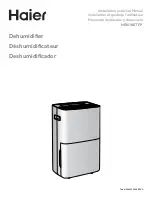
P
P
H
H
O
O
E
E
N
N
I
I
X
X
U
U
N
N
L
L
I
I
M
M
I
I
T
T
E
E
D
D
L
L
L
L
C
C
-
-
-
-
-
-
-
-
-
-
-
-
-
-
-
-
-
-
-
-
-
-
-
-
-
-
-
-
-
-
-
-
-
-
-
-
-
-
-
-
-
-
-
-
P
P
H
H
X
X
-
-
2
2
0
0
0
0
-
-
-
-
-
-
-
-
-
-
-
-
-
-
-
-
-
-
-
-
-
-
-
-
-
-
-
-
-
-
-
-
-
-
-
-
-
-
-
-
-
-
-
-
-
-
-
-
-
-
-
-
-
-
-
-
-
-
-
-
-
-
U
U
S
S
E
E
R
R
S
S
G
G
U
U
I
I
D
D
E
E
P
P
G
G
.
.6
SAFETY PRECAUTIONS AND WARNINGS
User’s Guide Information
Dry ice cleaning equipment should not be operated without proper training and the consent of your
direct supervisor or management. The information contained in the User’s Guide will provide all
the tools necessary for proper operation, safety, maintenance, and troubleshooting of the
equipment. Read and understand the contents of this guide before using or servicing your
machine.
Equipment Usage
Your new cleaning system was designed for use in an industrial environment. Proper safety precautions should be
practiced, observed, and monitored at all times. Be especially careful when blasting around materials that can
shatter. Dry ice blasting adapts to many types of applications, but the high velocity pellets can cause damage to
fragile items or substrates of low integrity. Remember NEVER to direct the blast stream at yourself or others.
Asphyxiation Hazard
Sublimation of dry ice creates CO
2
gas. This gas is 40% heavier than air, and thus displaces
oxygen in low-lying areas and enclosed spaces. When blasting, always have adequate ventilation
in and around your workspace. Contaminated compressed air (or nitrogen) used as a propellant
may greatly increase respiratory risk. A “High CO
2
” sensor/monitor with indicators is a
worthwhile investment and can help prevent accidental asphyxiation.
Noise
Blasting equipment generates a high velocity air flow from the nozzle. This air flow creates friction as it passes
through normal static air, resulting in high decibel noise levels. Though these levels can be controlled somewhat by
altering pressures and flow rates, ear protection is required in all blasting situations. Additional noise factors include
the object being cleaned, distance from the targeted material, media quantity being used (ice rate), and acoustic
surroundings. If you are unsure about blasting in an area around you or fellow co-workers, consult with your safety
director for advice and/or safety parameters before beginning work.
Emergency Stop Mechanism and other ways to stop blaster in Emergency
The PHX-200 is equipped with a Mushroom Head Emergency Stop Button. Pushing this button will stop the unit
immediately, requiring reset sequence to rearm the gun trigger.
There is also the ARM/DISARM Selector Valve. Disarming while blasting will send the blaster into the purge mode
and will purge at 45 PSI for three seconds.
In addition, closing the System Supply Valve will deprive the unit of air power and stop the system. Located on the
center of the handle is a locking device where a padlock can be installed to “lock out” the blast unit and prevent use.
Protective Gear
Before beginning work, make sure you have the proper protective gear for the job. This includes
the basics: Ear plugs or muffs (or both), eye protection, gloves, long sleeves, long pants, and
safety shoes. Dependant upon specialized cleaning jobs, you may also need other protective items
such as: self-contained breathing apparatus, respirator, grounding straps, skin protectors, jumpsuit,
special clothing, or other equipment as deemed necessary by your company’s safety regulations.







































